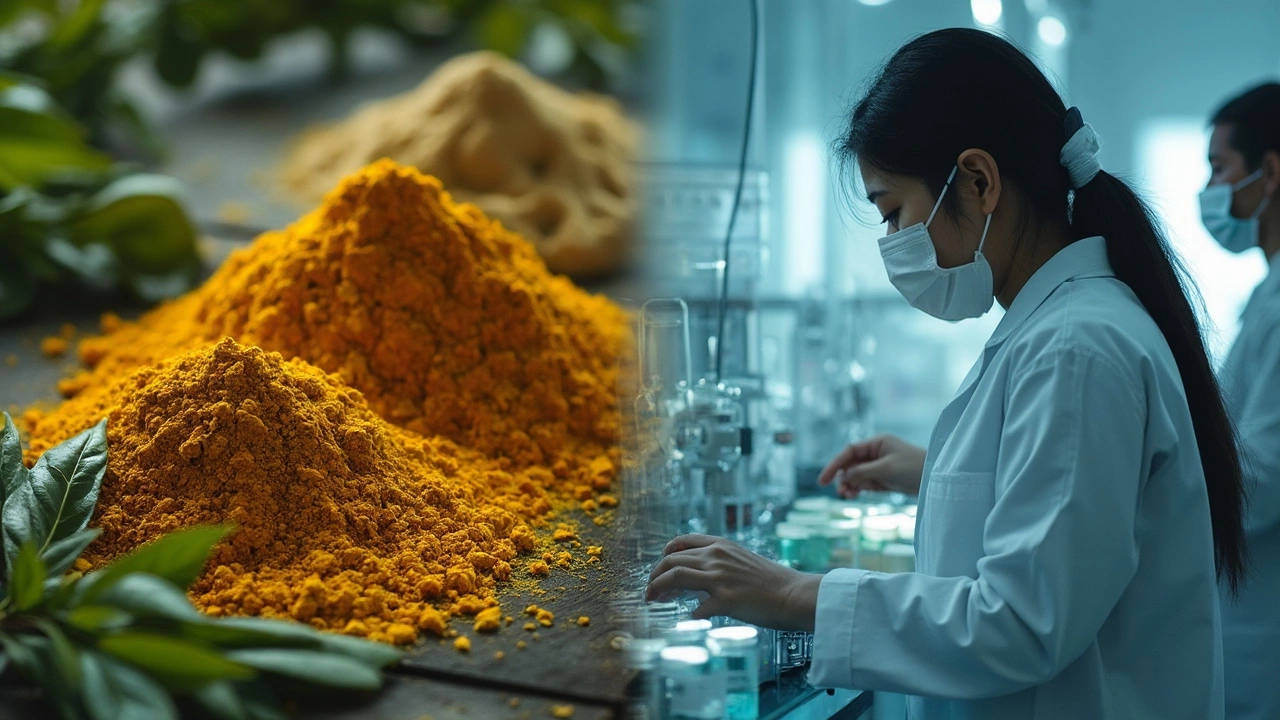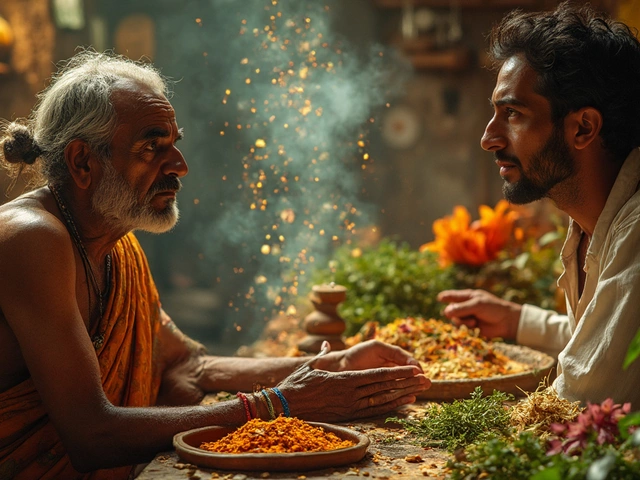
Think Ayurveda and you probably picture herbs, steaming teas, and ancient books. But is throwing ‘natural’ on a label all it takes to guarantee safety? Not quite. While shopping for an Ayurvedic supplement, it’s normal to wonder—are these really safe for me or my family?
Ayurvedic drugs don’t go through the same strict approval process as mainstream pharmaceuticals. That means quality can swing a lot between different brands or batches. Some companies are careful and professional, using safe ingredients and clean processing. Others? Not so much. Studies over the years have found cases where Ayurvedic products contained unexpected heavy metals like lead or mercury—stuff you definitely don’t want in your system.
Still, Ayurveda isn’t the bad guy. Millions of people have used these remedies without trouble. The difference often comes down to how much you know about what you’re picking, and whether you double-check the source. Let’s take a closer look at what actually goes into these drugs and what you can do to stay safe.
- What Makes Ayurvedic Drugs Different?
- Common Safety Issues and Controversies
- How to Choose Safe Ayurvedic Products
- Tips for Using Ayurveda Without Risk
What Makes Ayurvedic Drugs Different?
Ayurvedic drugs really stand out because they’re based on old-school Indian medicine. Not just a few decades old either—think thousands of years. Unlike most modern drugs, these formulas mix multiple herbs, minerals, and sometimes even animal products. You don’t get single-ingredient pills like you do at the pharmacy. Instead, it’s usually a blend meant to work on your whole body, not just tackle one symptom.
There’s another twist: Ayurvedic drugs are built on a “balance” belief system. In Ayurveda, you’re thought to have unique body types (doshas), and the right remedy is supposed to restore your natural balance. So, two people with the same sore throat might get totally different remedies.
- Whole Plants, Not Just Extracts: Most Ayurvedic drugs use ground-up roots, leaves, or seeds, not isolated chemicals. The idea is that the full plant offers more than just a single active ingredient.
- Personalized Treatment: Remedies can be tweaked for age, lifestyle, or even the weather. Modern drugs rarely do this.
- Preparation Methods: Making an Ayurvedic remedy isn’t like tossing herbs in hot water. They might cook ingredients for hours, ferment them, or mix them with ghee or honey to pull out certain properties.
One area where Ayurveda gets mixed reviews is safety oversight. In countries like India, there’s a set of guidelines producers are supposed to follow. But the rules aren’t always enforced strictly. Here’s a quick table that breaks down how Ayurveda and regular pharmaceuticals stack up:
| Aspect | Ayurvedic Drugs | Modern Pharmaceuticals |
|---|---|---|
| Main Ingredients | Multiple herbs, minerals, sometimes animal products | Single active compound, usually synthetic |
| Personalization | Frequently tailored to the individual | Mostly "one-size-fits-all" dosing |
| Regulation | Vary widely, often less strict | Heavily regulated, strong oversight |
| Prep Methods | Traditional, sometimes complex; includes decoctions, fermentation | Standardized processes in factories |
All this makes Ayurvedic remedies feel more like food or supplements to a lot of people. But it also means what’s in that bottle can change a lot from one brand to the next. Not all blends follow the strict old recipes, and not every factory puts purity first.
Common Safety Issues and Controversies
The big headline in the world of Ayurvedic drugs is that not all products are as safe as you’d hope. Unlike prescription medicines, there’s no global standard for what’s allowed in these remedies—and that can cause real problems for people who trust them blindly.
Let’s get specific. In 2008, a detailed study published in JAMA checked 193 Ayurvedic products sold online. Shockingly, about 20% had detectable levels of either arsenic, mercury, or lead—three heavy metals that you definitely don’t want to mess with. Some products were above safety limits by more than 100 times. The situation’s so serious that the U.S. Food and Drug Administration (FDA) even issues public warnings about these risks from time to time.
| Heavy Metal | Max Allowed in U.S. (mcg/day) | Found in Some Ayurvedic Drugs (mcg/day) |
|---|---|---|
| Lead | 5 | Up to 100 |
| Mercury | 2 | Up to 50 |
| Arsenic | 10 | Up to 80 |
Some manufacturers say these metals are “purified” and used for therapeutic reasons in small amounts, but there’s little science to back that up, especially at those high doses. If you have kids at home (like I do), this should definitely put you on alert.
There’s also the issue of mixing modern drugs into Ayurvedic formulas. Tests have found steroids, painkillers, and even anti-diabetic drugs hiding in capsules and powders that are labeled as “all-natural.” This sneaky practice can lead to nasty side effects or serious reactions, especially if you’re already taking other medicine.
“Herbal medicines—especially if imported or bought online—sometimes contain undisclosed prescription drugs or toxic metals. These can have dangerous effects, particularly in children and pregnant women,” says Dr. Shailaja Nair, a clinical pharmacologist from Mumbai.
Besides all this, allergic reactions happen more often than you’d think. Anyone with seasonal allergies knows even plant-based stuff can trigger rashes, breathing issues, or stomach upset. A lot of people just don’t report these troubles or connect them with their Ayurvedic remedy.
So next time you spot an Ayurvedic product promising miracle results, remember—natural doesn’t always mean harmless. Check the label, look for trusted brands, and be extra careful with products that sound too good to be true.

How to Choose Safe Ayurvedic Products
If you’re wondering how to actually find Ayurvedic drugs you can trust, you’re definitely not alone. The shelves are stacked with options—powders, tablets, oils, teas—but not all of them are made equal. Choosing the right product often feels like crossing a minefield, especially with so many brands claiming their formula is ancient, pure, or doctor-recommended.
Here are some solid steps you can actually use the next time you’re shopping or browsing online:
- Check for Certifications: Look for products certified by agencies like the AYUSH Ministry (in India) or third-party testers (such as GMP: Good Manufacturing Practices). If you’re outside India, some trustworthy brands get certifications from groups like NSF International or the US Pharmacopeia.
- Read the Ingredient List: If the label mentions bhasmas (metallic or mineral ingredients), proceed with caution. These can contain heavy metals, and some are only safe when processed correctly, which isn’t always a given with every company.
- Go for Transparent Brands: Good companies are open about their sourcing, how their herbs are grown, and what tests they run for purity and potency. If they dodge your questions or hide basic info, that’s a red flag.
- Avoid Over-the-Top Claims: No pill or powder cures everything. If the packaging guarantees miracle cures or seems too good to be true, it probably is. Stick to brands that focus on one purpose at a time, with realistic benefits.
- Don’t Ignore Batch Numbers and Expiry Dates: Unlabeled or expired products can be risky. Genuine products always have a batch number and a clear expiry date in plain sight.
One more thing—if you can, talk to a real Ayurvedic practitioner. They can help you find what actually fits you, rather than just whatever’s trending. Reliable practitioners usually prefer products from well-tested brands and know which companies have a good track record.
I’ve seen friends get excited about some powder trending on Instagram, only to have stomach issues within days. Just because an influencer swears by it doesn't cut it—do your homework and trust your gut.
Tips for Using Ayurveda Without Risk
If you want to get the benefits from Ayurveda but don’t want any surprises, it pays to be smart about your choices. Let’s break it down in a way that actually keeps you safe, not just hopeful.
- Ayurvedic drugs aren’t all the same—always double-check brand reputation. Pick products from well-known, established companies. In India, look for brands certified by the AYUSH Ministry, like Himalaya or Dabur. Outside India, check if the supplement is lab-tested in the country where you buy it.
- Don’t fall for claims that sound too good. If something promises to cure everything from baldness to diabetes in a week, that’s a red flag. Real Ayurveda is about long-term balance, not quick fixes.
- Read the label and look for batch numbers, manufacture dates, and ingredient lists in plain English. If you don’t see these, skip the product.
- If you’re pregnant, nursing, or have a chronic illness (like diabetes or high blood pressure), talk to your regular doctor before trying any herbal remedies. Some herbs can mess with your prescription meds or even blood sugar levels.
- Stick to the recommended dose, no matter how tempted you are to “double up.” Natural doesn’t always mean harmless—Ayurvedic herbs like aconite and datura can be deadly in high amounts.
Want a snapshot of what to watch for? Here’s a quick table showing common risks and how to dodge them:
| Risk | How to Avoid |
|---|---|
| Heavy metals (lead, mercury, arsenic) | Buy products lab-tested for contaminants |
| Fake or contaminated products | Pick brands with third-party certifications |
| Bad interactions with prescription drugs | Ask your doctor before starting something new |
| Wrong dosage | Follow the label exactly; no guesswork |
If you try a new remedy and feel weird symptoms (like nausea, headaches, rashes, or anything that just feels off), stop using it and talk to a doctor right away. Don’t wait it out hoping it’ll pass.
I’ve seen people get real results sticking to these steps—my own mom swears by her turmeric tablets, but only after her doc checked the brand she was buying. It’s all about mixing tradition with some common sense.





Rohan Talvani
I am a manufacturing expert with over 15 years of experience in streamlining production processes and enhancing operational efficiency. My work often takes me into the technical nitty-gritty of production, but I have a keen interest in writing about medicine in India—an intersection of tradition and modern practices that captivates me. I strive to incorporate innovative approaches in everything I do, whether in my professional role or as an author. My passion for writing about health topics stems from a strong belief in knowledge sharing and its potential to bring about positive changes.
view all postsWrite a comment